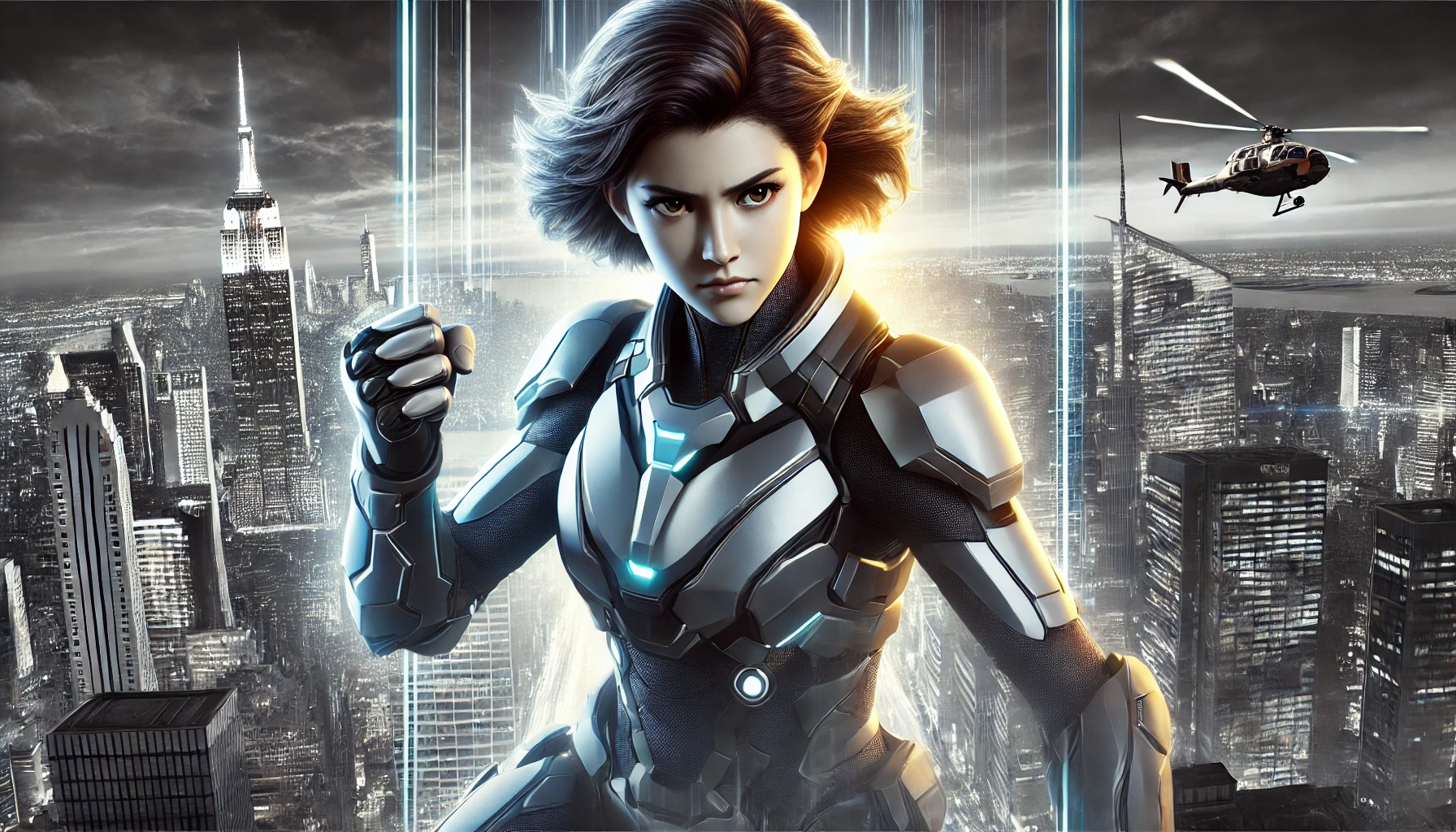Female anime characters have played a vital role in shaping the anime industry, captivating audiences with their depth, complexity, and diverse portrayals. From fearless warriors to gentle-hearted protagonists, these characters have evolved over the decades, reflecting societal changes and shifting storytelling dynamics. This guide delves deep into the world of female anime characters, exploring their history, archetypes, development, and impact on global pop culture.
History of Female Anime Characters
The Early Years
The portrayal of female anime characters in the early days was largely limited to traditional gender roles. Classic series like Astro Boy (1963) and Princess Knight (1967) introduced some of the first female leads, often portraying them as damsels in distress or princesses waiting to be saved.
The Evolution Through the Decades
As anime evolved, so did its female characters. The 1980s and 1990s saw the rise of strong-willed heroines like Nausicaä from Nausicaä of the Valley of the Wind (1984) and the battle-ready Motoko Kusanagi from Ghost in the Shell (1995). The 2000s and beyond brought even more diversity, with characters breaking stereotypes and taking on lead roles in action, sci-fi, and fantasy genres.
| Decade | Notable Female Anime Characters |
| 1960s | Princess Sapphire (Princess Knight) |
| 1980s | Nausicaä (Nausicaä of the Valley of the Wind) |
| 1990s | Motoko Kusanagi (Ghost in the Shell), Sailor Moon (Sailor Moon) |
| 2000s | Asuka Langley (Neon Genesis Evangelion), Winry Rockbell (Fullmetal Alchemist) |
| 2010s | Mikasa Ackerman (Attack on Titan), Nezuko Kamado (Demon Slayer) |
Popular Archetypes of Female Anime Characters
The Tsundere
One of the most popular archetypes, tsundere characters exhibit a mix of coldness and warmth. They often appear aggressive or aloof at first but gradually show their softer side. A classic example is Taiga Aisaka from Toradora!.
The Yandere
Yandere characters are known for their obsessive and often dangerous love for another character. Yuno Gasai from Future Diary embodies this archetype with her deep devotion and willingness to eliminate anyone who stands in her way.
The Kuudere
Cool and composed, kuudere characters rarely show emotion but have a deep, caring side hidden beneath their stoic exterior. Rei Ayanami from Neon Genesis Evangelion is a prime example.
The Genki Girl
Energetic and full of life, genki girls bring excitement to any story. A notable example is Haruhi Suzumiya from The Melancholy of Haruhi Suzumiya.
The Dandere
Shy and introverted, dandere characters take time to open up but are incredibly lovable. Hinata Hyuga from Naruto is a well-known dandere.
Iconic Female Anime Characters Across Genres
Action & Adventure
- Mikasa Ackerman (Attack on Titan) – A highly skilled fighter with unwavering loyalty.
- Revy (Black Lagoon) – A gunslinger with a no-nonsense attitude.
Fantasy & Sci-Fi
- Asuna Yuuki (Sword Art Online) – A powerful warrior and strategist.
- Motoko Kusanagi (Ghost in the Shell) – A cybernetically enhanced detective.
Romance & Drama
- Tohru Honda (Fruits Basket) – A kind-hearted girl with immense emotional strength.
- Shouko Nishimiya (A Silent Voice) – A deaf girl who faces adversity with resilience.
The Role of Female Anime Characters in Storytelling
Female anime characters are often central to a story’s emotional depth and progression. Whether as protagonists, mentors, or antagonists, they shape the plot and contribute to its themes. Their struggles and triumphs often mirror real-life issues, making them relatable and inspiring.
The Influence of Female Anime Characters on Pop Culture
Fandom and Cosplay
Many female anime characters have massive fan followings, inspiring cosplay, merchandise, and even academic discussions on gender representation in anime.
Merchandise and Commercial Impact
Characters like Sailor Moon and Nezuko Kamado drive significant revenue through action figures, apparel, and collectibles.
Future Trends
The portrayal of female anime characters continues to evolve, with more creators focusing on multi-dimensional storytelling and diverse representation. Upcoming anime titles are set to introduce even more strong, independent, and complex female leads.
FAQs
Who is the most popular female anime character?
Characters like Mikasa Ackerman, Asuna Yuuki, and Sailor Moon consistently rank among the most popular.
What is the difference between a tsundere and a yandere?
A tsundere is initially cold but warms up over time, while a yandere is deeply obsessed with their love interest, often to a dangerous extent.
Which anime features the best female protagonists?
Attack on Titan, Sailor Moon, Fullmetal Alchemist, and Demon Slayer are known for their strong female leads.
Why are female anime characters so diverse?
Anime creators aim to represent a wide range of personalities, making their stories more engaging and relatable.
What makes a female anime character iconic?
Strong character development, unique design, and emotional depth contribute to a character’s iconic status.
How do female anime characters differ in Western vs. Japanese storytelling?
Female anime characters in Japanese media often embody a mix of strength and vulnerability, influenced by traditional values and modern feminism. In contrast, Western media tends to emphasize independence and assertiveness, often portraying female leads with a more direct approach to empowerment.
What are some underrated female anime characters that deserve more recognition?
Characters like Balsa (Moribito: Guardian of the Spirit), Nana Osaki (Nana), and Holo (Spice and Wolf) are highly developed but often overlooked due to their anime not being mainstream hits.
How has the portrayal of female anime characters influenced real-world feminism?
Anime has contributed to discussions on gender roles by showcasing powerful female leads, breaking traditional stereotypes, and inspiring conversations about female agency in storytelling.
Which anime studios are known for creating strong female protagonists?
Studios like Kyoto Animation (A Silent Voice), Studio Ghibli (Princess Mononoke), and Madhouse (Nana) are known for developing compelling female leads with depth and complexity.
What are the common criticisms of female anime characters, and how are they being addressed?
Some common criticisms include excessive fan service, lack of agency, and overused tropes. However, modern anime has been shifting toward more nuanced and realistic portrayals, offering well-rounded characters with their own motivations and growth arcs.
Conclusion:
Female anime characters play a crucial role in storytelling, offering fans inspiration, entertainment, and meaningful narratives. Their evolution over time has led to greater diversity, breaking stereotypes and redefining their roles in anime. Whether as warriors, romantics, or strategists, these characters continue to shape the anime landscape and leave a lasting impact on audiences worldwide.
Recommand Article:
Complete Guide to the NM5001-RKG-B01 Power Lift Recliner
India National Cricket Team vs England Cricket Team Match Scorecard
West vs East Match Player Stats – A Comprehensive Guide!
76ers vs Knicks Match Player Stats – A Comprehensive Guide!
OKC Thunder vs Dallas Mavericks Match Player Stats – A Comprehensive Guide!





